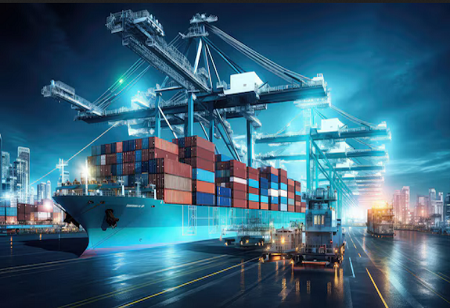
The ability of global shipping to withstand numerous disruptive factors could be essential for the future of the global economy. According to the most recent weekly report from shipbroker Intermodal, the collapse of the Francis Scott Key Bridge in Baltimore has led to immediate logistical challenges in the area, causing widespread worry within the logistics and freight industries. The Port of Baltimore, an essential hub in the worldwide trade network, is the 11th largest port in the United States. Recognized for its flexibility, the port manages a wide range of goods, including vehicles, machinery, coal, and grain, as well as a large amount of cargo.
“In 2023, the port marked a record by importing cargo valued at $55.2 billion and exporting goods worth $80 billion, as noted by Governor Wes Moore. Its strategic position is further bolstered by its capacity to accommodate the largest class of container ships, attributed to its deep channels and sophisticated infrastructure.”
The shipping industry in recent years has seen a huge transformation owing to the technological advancements. An area which has seen significant progress is port automation & efficiency enhancements. In this article let us look at how implementation of automation has enhanced efficiency and streamlined the processes in port operations.
Automation technologies & Digitalization & connectivity
The adoption of automation technologies is a key trend in shaping port operations. Ports are utilizing cutting-edge technologies for automating several aspects of their operations right from automated cranes & container handling equipment to AGVs (automated guided vehicles), & unmanned aerial vehicles. These advancements not only help in improving efficiency but they also help in enhancing safety and decrease operational costs.
“The maritime industry, long steeped in tradition, has witnessed a transformative wave with the adoption of emerging technologies. Captain Sanjay acknowledges the pivotal role of IT and automation in ensuring seamless operations, reducing workforce requirements, and enhancing machinery maintenance,” says Captain Sanjay Shrivasta, CEO, Suntech Crew Management.
Ports have begun to embrace digitalization increasingly & connectivity to maximize workflows and improve visibility across the supply chain, in addition to automation. Advanced data analytics, IoT sensors & cloud-based platforms enable real-time monitoring of port activities, predictive maintenance and better decision-making. Ports can achieve greater operational efficiency and agility through digitizing processes digitalization and integrating systems.
Environmental sustainability
A focus on environmental sustainability is one of the most important aspects of modern port & shipping industry. While the shipping industry has been associated with several significant environmental impacts, coupled with a growing emphasis on sustainability & decarbonisation, the International Maritime Organization plays a significant role in guiding the sector towards sustainability.
The implementation of green technologies as well as the exploration of alternative fuels like the LNG is central to the decarbonization of shipping. While electric & hybrid propulsion systems provide additional pathways to sustainability, energy-efficient ship design & equipment enhancements, like highly efficient propellers are anticipated to reduce fuel consumption significantly along with greenhouse gas emissions.
“Federal incentives in the Inflation Reduction Act have made the United States one of the most competitive regions in the world for green fuel production,” said Aparajit Pandey, Principal and Shipping Decarbonization Lead at RMI. “Smaller ports with excellent renewable resources, including ports in the Global South, can build cost-competitive hydrogen production facilities and participate in the global bunker market”
Real-time connectivity, IoT & Digitalization of supply chains
The shipping industry is being transformed with real-time connectivity & IoT. Furthermore, high-speed internet is accessible with Low Earth orbiting (LEO) satellite technology even in remote locations, enhancing supply chain visibility & communication. IoT devices like smart containers, as well as intelligent ships facilitate continuous monitoring, operational optimization, and risk assessment by empowering shipping companies & the other stakeholders such as their partners.
The digital transformation goes beyond ships & extends to the entire supply chain. Digital twins that are virtual replicas of physical systems improve the design & performance monitoring of ports & ships. Industry-specific software applications, which include fleet management platforms, communication platforms and operations systems are used for improving efficiency across the network.
“Covering a vast coastline of 7,517 kilometers, the Indian shipping industry has scaled new heights in recent years. The government has also been catalyzing development through its port-led initiatives like the introduction of the model of Build, Operate, and Transfer (BOT) and Sagarmala which aims to build new ports within short distances, improve infrastructure, and reduce the cost of logistics,” says Dr. Arul Anthony Joseph, Chairman.
“This has, in turn, empowered the shipping service fraternity to eliminate most of the challenges that were hindering a smooth customer experience,” he adds.
Marked by sustainability, digitalization and heightened security measures, the shipping industry is on the verge of a huge transformation as these trends provide newer opportunities for innovation in an industry that was traditionally resistant to transformation. The potential advantages go beyond the sector by creating shared value for international trade, society as well as the environment. Connectivity, clear-sightedness & efficiency will be crucial for success as the shipping sector adapts to these changes.
We use cookies to ensure you get the best experience on our website. Read more...